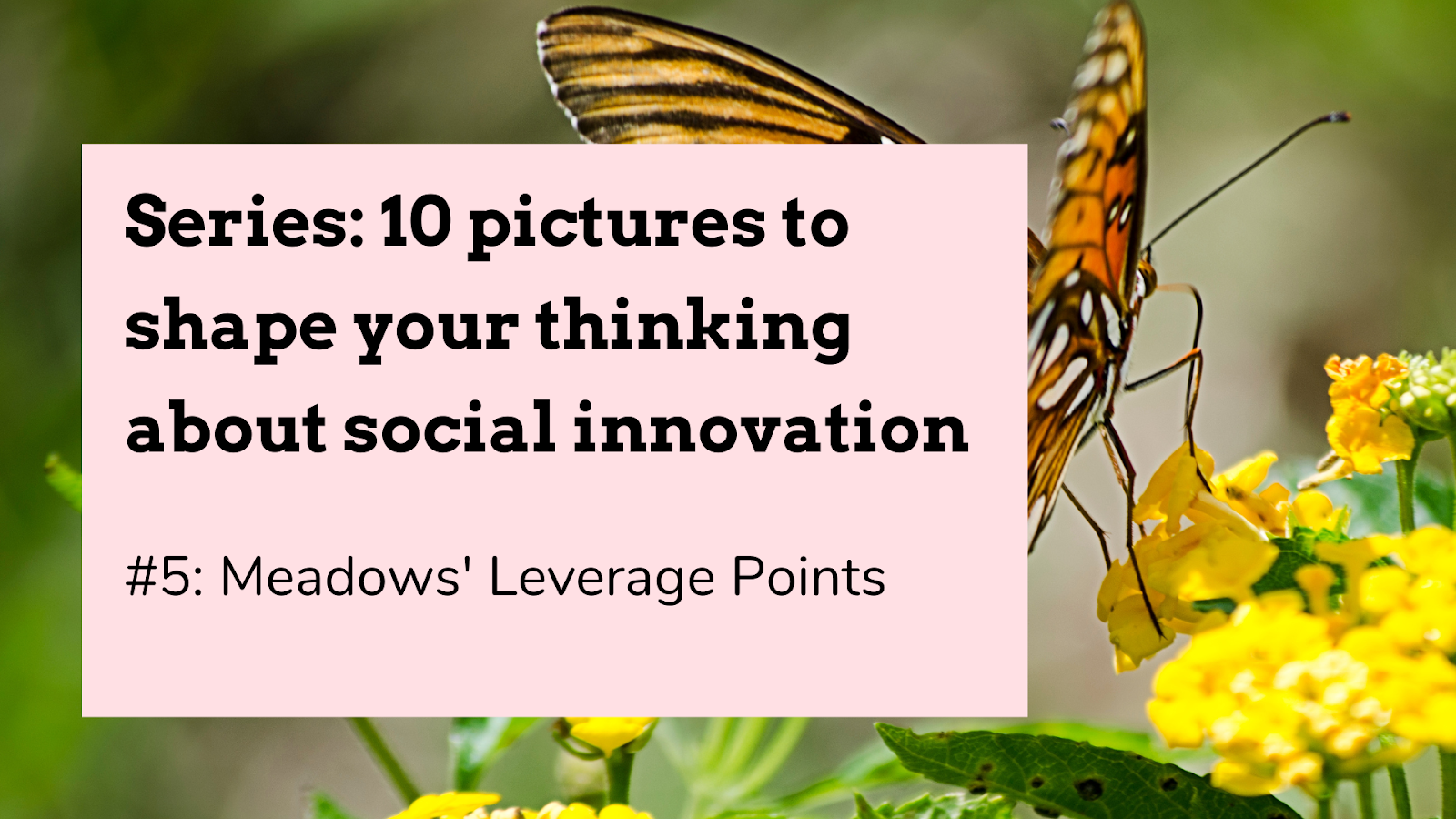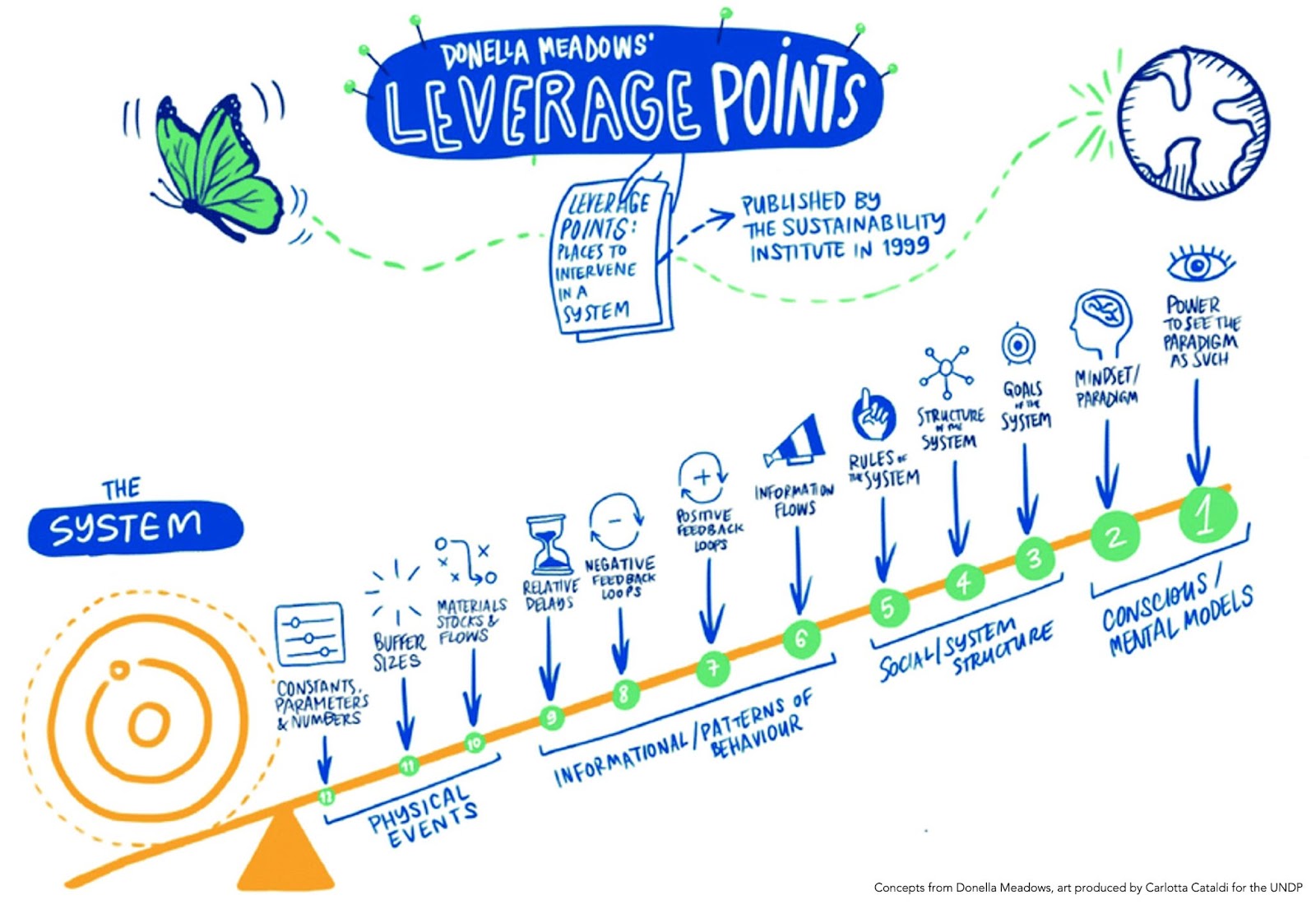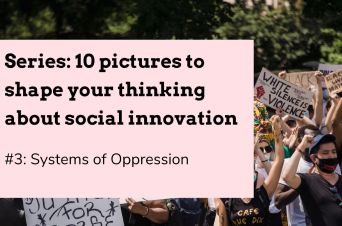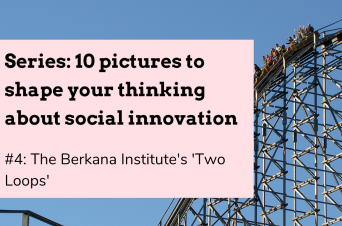
Meadows’ Leverage Points
blog | Words Matt Berry | 18 Nov 2022
In this 10-part series, we share 10 different pictures that can help us to make sense of the big complex world of social innovation and systems change
#5: Meadows’ Leverage Points

What does it say?
The pictures I’ve shared so far have really helped me to understand the contexts and systems I’m designing in, which is so important – but it doesn’t tell what I might do next. This picture starts to get into the territory of how we can deliberately act to change systems for the better.
In 1997, Donella Meadows, a leading figure in (modern, Western) systems thinking, published a paper called ‘Places to intervene in a system (in increasing order of effectiveness)’. The paper outlines 12 “leverage points” for systems change – places where “a small shift in one thing can produce big changes in everything”.
The paper is a great introduction to systems thinking – it takes the reader on a tour of the various elements of a system we might engage with when hoping to change it.
There’s a lot of thinking crammed into this picture but the key messages for me are:
- Many of the ways we try to change systems are actually pretty low-leverage and unlikely to last.
- The highest leverage opportunities are to do with rules, structure and goals of a system, and the paradigm the system arises from.
How is it being used?
A great example of a deliberate shift in leverage points, and one of my first introductions to social innovation, happened around homelessness in WA around 6 years ago.
A range of groups, including the WA Alliance to End Homelessness and the Centre for Social Impact at UWA, had realised that to make the change needed, they needed to reach for a higher leverage point: the goals of the system.
Many efforts to date had been focused on relatively low leverage parts of the system: the stock of beds available in refuges, or the wait time to get into temporary accommodation. The new goal put forward was a bold and inspiring call to do things differently: rather than managing or reducing it, people started talking about ending homelessness altogether.
This new goal demanded new measures of success, new forms of collaboration, new kinds of service delivery and support – and it has driven a whole lot of high-impact work since.
Why is it important?
In part, because of the link to my own journey – hearing people like Katie Stubley, Claire Dodd and Jethro Sercombe talking about this big bold shift in the goal of the homelessness system back then was part of what inspired me to get into social innovation and design in the first place.
As well as that, I love the practical nature of this picture – it feels like an invitation to take action and start changing systems for the better. While theory and research are important, it’s easy to get stuck in analysis paralysis, and we often need a nudge into just getting started. As Kurt Lewin is credited with saying, “If you want to truly understand something, try to change it.”
Follow Matt Norman on LinkedIn for more insights and ideas about social innovation.
More from this series

The Power Shift Framework
In this 10-part series, we share 10 different pictures that can help us to make sense of the big complex world of social innovation and systems change.
18 Nov 22

Systems of Oppression
The next in our 10-part series sharing different pictures that can help us to make sense of the big complex world of social innovation and systems change.
11 Nov 22

The Berkana Institute’s ‘Two Loops’
In this 10-part series, we share 10 different pictures that can help us to make sense of the big complex world of social innovation and systems change
11 Nov 22